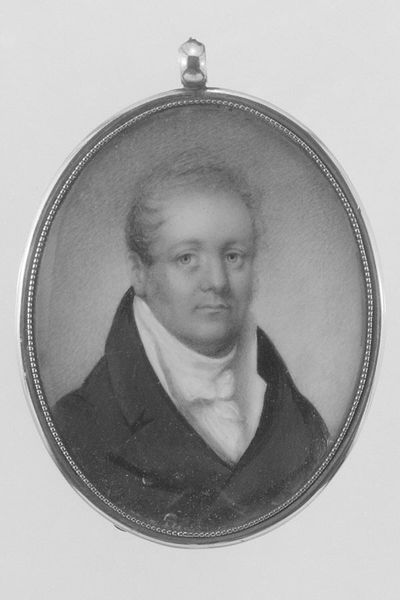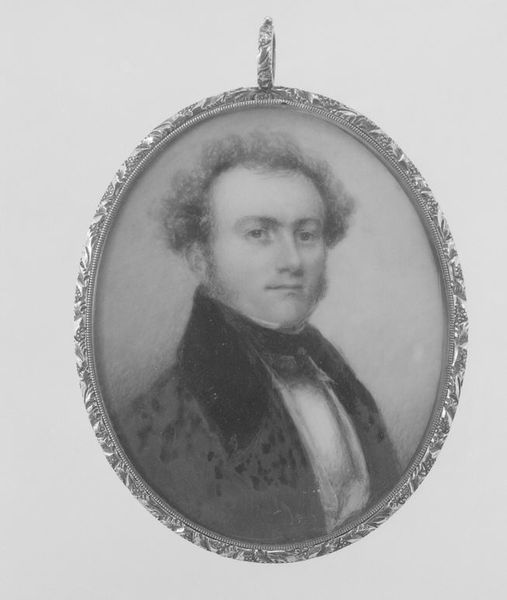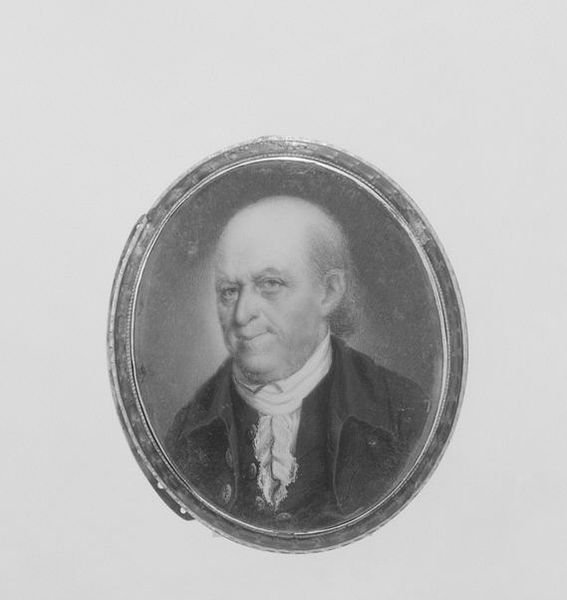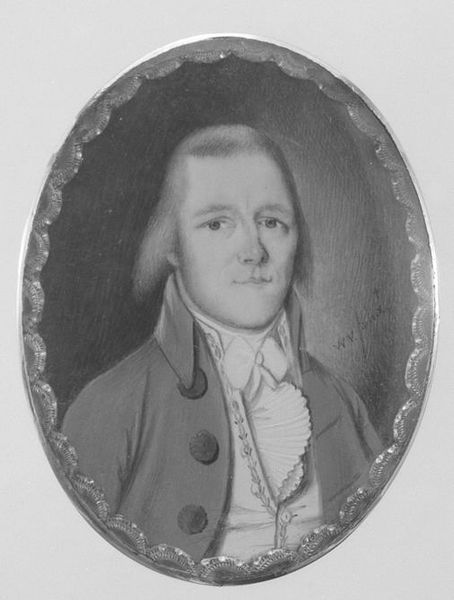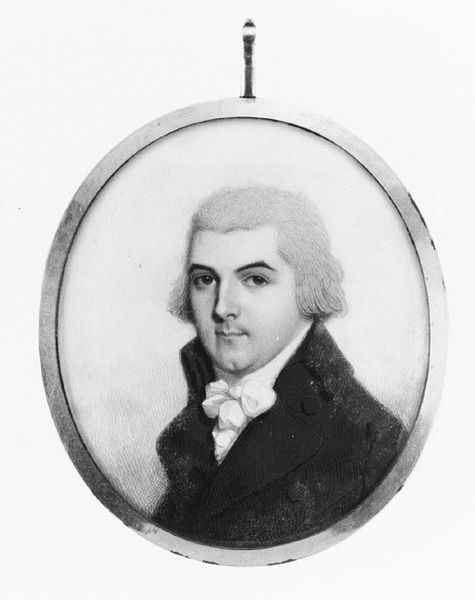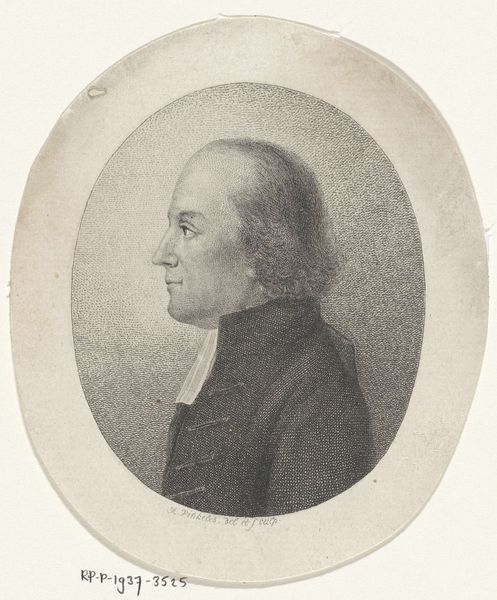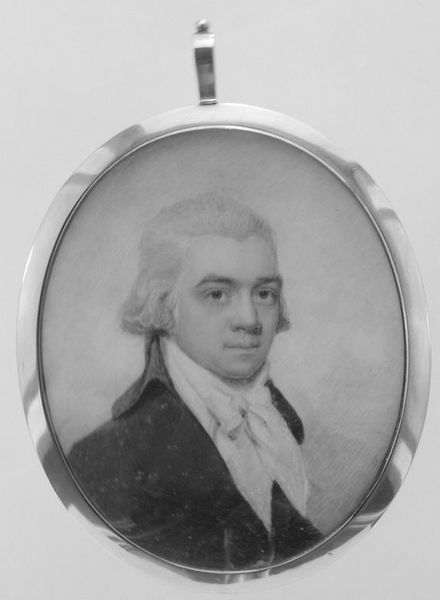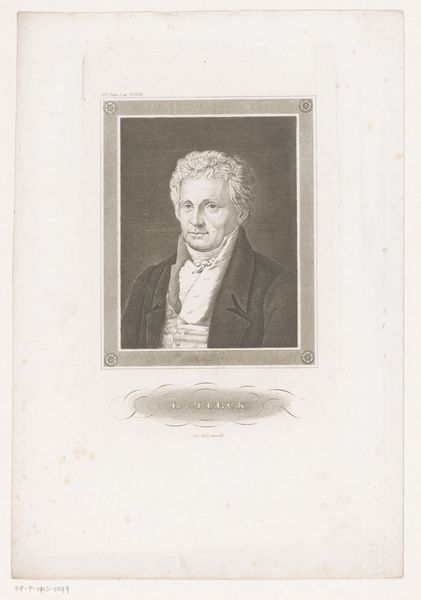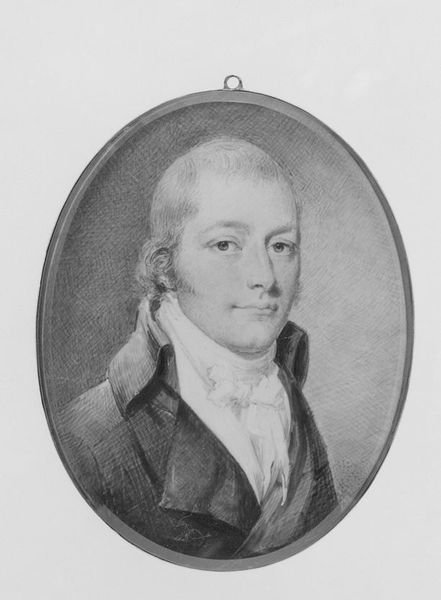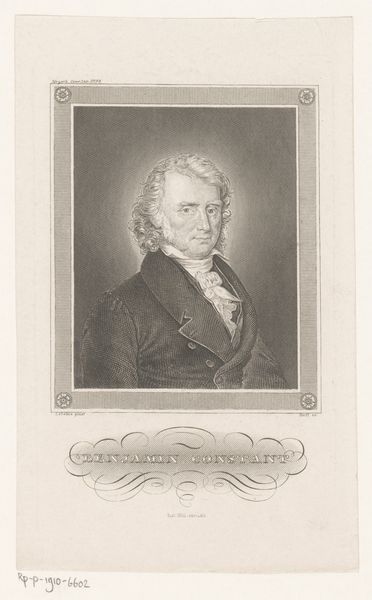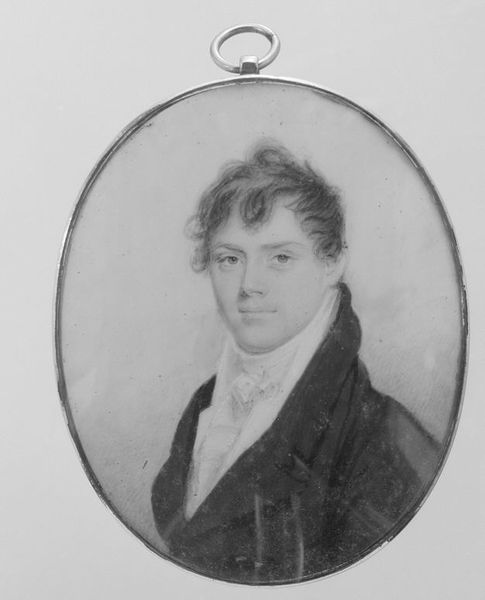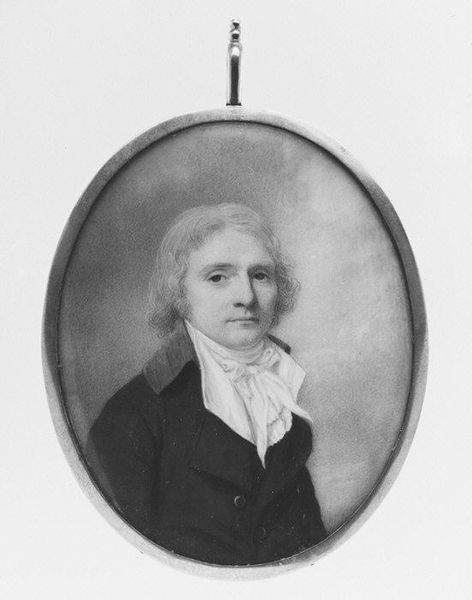
drawing, pencil
#
portrait
#
drawing
#
neoclacissism
#
portrait
#
black and white
#
pencil
#
academic-art
#
realism
Dimensions: 3 5/16 x 2 5/8 in. (8.4 x 6.6 cm)
Copyright: Public Domain
Editor: Here we have Nathaniel Rogers's "Portrait of a Gentleman," created in 1813, currently residing at the Met. It’s a pencil drawing that has a very direct, almost severe feel. What strikes you when you look at this piece? Curator: The gentleman’s direct gaze, his positioning with what appears to be architectural plans…it speaks to the rise of a professional class in the early 19th century, doesn't it? I'm particularly interested in considering how the artwork intersects with social structures of the time. Rogers made this portrait during an era defined by burgeoning national identity coupled with class consciousness and political tensions. Can we look at how the portrayal of this man and his implied profession contributes to, or perhaps even challenges, those dynamics? Editor: That's fascinating! I was only thinking of it aesthetically. Is the fact that it’s a drawing important? Curator: Absolutely. Consider the choice of pencil as a medium. In this historical and economic context, a pencil drawing has class connotations distinct from, say, an oil painting. Drawing was then becoming democratized, and was deemed suitable for an emerging professional class, signaling access without necessarily being lavish. The architectural plans further emphasize his place in the building and creation of a new nation. What message does the sitter, Rogers, want to convey? Editor: So, it’s not just a portrait; it’s a statement about social mobility and nation-building! Curator: Precisely. Consider the sitter's clothing. How does this convey his social standing? The way he presents himself sends intentional message during a pivotal era in the construction of American identity and economic change. Editor: I hadn't considered the role of art in expressing such social identities and changes back then. I’ll never look at portraits the same way! Curator: Nor should you! That's precisely why exploring these historical and social nuances can enrich your understanding. Hopefully our conversation allows others to appreciate such intersectional views, too.
Comments
No comments
Be the first to comment and join the conversation on the ultimate creative platform.
